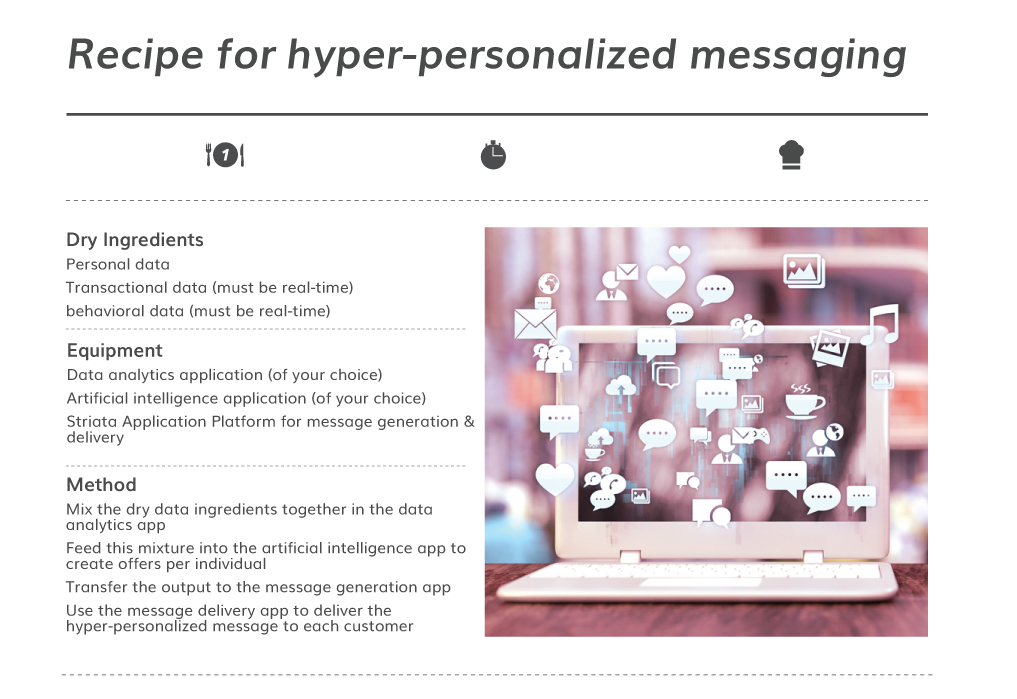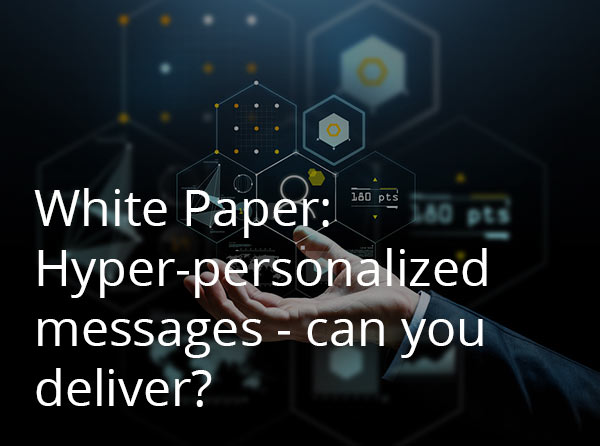
In the not-too-distant past, organizations looking to communicate effectively with their customers didn’t have to be overly concerned with personalization. As long as you got their names right, they’d probably stay onboard. But, as digital-first communication has become the norm, organizations have had to go a lot further when it comes to speaking to their customers.
Today’s customer expects to receive relevant communications at the right time and on the channel they’re most comfortable using.
Fortunately, organizations also have a lot more technology at their disposal when it comes to adopting a more hyper-personalized approach. Real-time data, artificial intelligence, and prescriptive analytics, have all made it easier to speak to people as individuals, rather than as a larger groups or segment.
That said, any hyper-personalization strategy has to be implemented in a considered manner that puts the customer experience first.
Taking segmentation to the next level
At this point, it’s worth pointing out that hyper-personalization doesn’t mean ignoring traditional characteristics, such as demographics, geographics and psychographics. Instead, it means applying them to the individual level.
Where a personalized approach takes data such as a customer’s name, organization, title, and possibly even historical purchase data into account, a hyper-personalized approach incorporates real-time and behavioral data to build a next best offer or action that is highly relevant and delivered at the optimal time.
If you imagine customer profiling (segmentation) as a broad strokes approach, hyper-personalization is more fine tuned, focusing on the micro details missed, when grouping people into market segments.
To understand how hyper-personalization works, it’s useful to look at how it’s applied in the retail space…

Personalization
Ordinarily, a customer might be sent an email with monthly specials based on their age, where they live, and what they’ve bought previously

Hyper-personalization
With hyper-personalization, a retailer can send customers tailored messaging based on their personal preferences, previous spending patterns, and even the weather outside.
A hyper-personalized approach makes customers much more likely to not only purchase, but also remain loyal down the line.
Do you have the right tech?
In order to take this approach, organizations have to be able to gather massive amounts of data on their customers.
Fortunately, new technologies allow them to, not only gather this data, but also process it. This enables businesses to produce content that is intensely relevant to that customer, at that moment, prompting them to accept the offer or take the action proposed within that message.
The impact of being able to effectively deliver the ‘next best offer’ via the right digital channel at the right time, when it is needed, will be an increase in spend, brand engagement and customer loyalty.
In tough economic times, with fierce competition for a share of a decreasing wallet, loyal customers are gold.
Big data and artificial intelligence can produce the next best offer for your customer.
But, are you able to DELIVER that message in a way that maximizes engagement?
Getting it right
But, if an organization is going to apply hyper-personalization to its customer communications, it has to take the right approach.
Here’s what this might look like in recipe form:

Reaping the benefits
Any organization that gets this recipe right, stands to reap serious benefits.
Customers are increasingly willing to trade data for a more personalized experience.
%
83% of consumers are willing to share their data to enable a personalized experience, and, as this Salesforce study shows, increasingly, consumers expect that companies will anticipate their needs and make relevant suggestions, before they even make contact.
Any organization that understands this and provides enhanced customer engagement will grow and retain more customers, who will also be more engaged and, importantly, spend more money with the organization.
Organizations that fail to take a hyper-personalized approach, meanwhile, risk a higher level of customer churn.
%
According to research, 41% of US consumers admit having moved away from their preferred brands due to a lack of personalization and trust.
Businesses that successfully apply hyper-personalization to their customer communications can expect greater customer retention, improved loyalty and increased spend from more engaged customers.
















